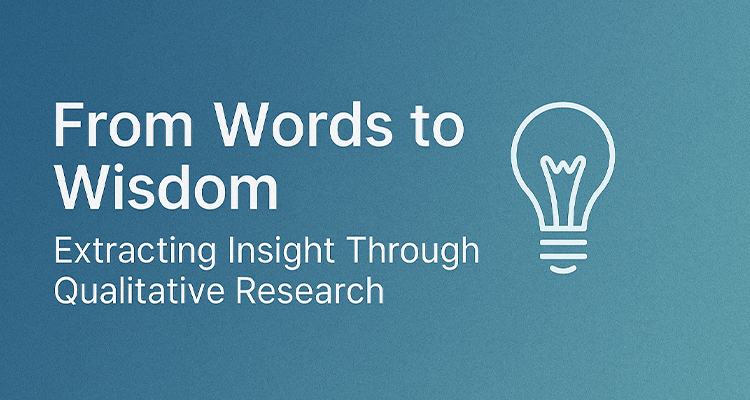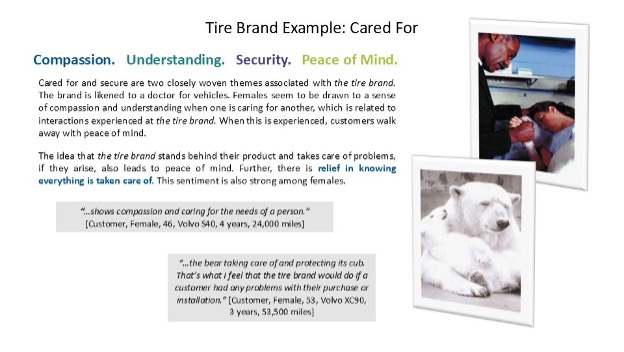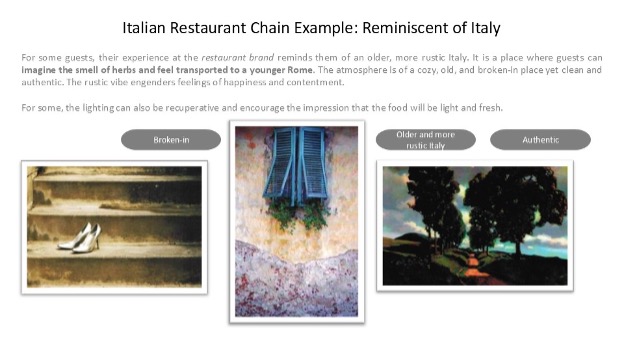Descubriendo verdades ocultas en la investigación cualitativa

No toda la información se crea de la misma manera. Los datos nos dicen lo que pasó. Los hallazgos nos dicen lo que se dijo. Sin embargo, las ideas revelan qué motiva a las personas, cómo toman decisiones, qué es lo que realmente valoran y por qué se comportan de la manera en que lo hacen.
En mercados competitivos, la diferencia entre el éxito y el estancamiento a menudo se reduce a entender al cliente mejor que nadie. Los conocimientos son la base de un posicionamiento sólido de la marca, de unos mensajes relevantes, de una innovación significativa y de unas experiencias de cliente satisfactorias. Sin información, la estrategia es un juego de conjeturas.
La búsqueda de información verdadera no siempre es intuitiva, pero se puede aprender. Cuando se practica bien, revela patrones y verdades que mejoran la estrategia de marketing, el desarrollo de productos y el posicionamiento de la marca.
En la investigación cualitativa, las ideas significativas rara vez provienen de un solo comentario o punto de datos. Surgen a través de la escucha activa, la interpretación cuidadosa y la capacidad de conectar ideas que pueden no parecer relacionadas. A veces, las ideas llegan como un momento de «ah, ja», en el que muchas aportaciones se alinean. Otras veces, salen a la luz a través de contradicciones, de la comprensión contextual o de la superposición del conocimiento histórico con lo que dicen los encuestados.
Esto es lo que denominamos minería en busca de información.
¿Qué es realmente una visión?
Una idea no es un resumen, una cita destacada o una reafirmación de lo obvio. Es una comprensión más profunda, a menudo emocional y, a veces, paradójica, que revela algo que antes no se había dicho o desconocido. En la investigación cualitativa, las verdaderas ideas surgen de la síntesis. A menudo conectan múltiples puntos de datos, perspectivas contradictorias o ideas que al principio parecen no estar relacionadas.
Los conocimientos enriquecidos suelen cumplir varios de los siguientes criterios:
- No se ha articulado o conocido previamente
- Surge de la síntesis de múltiples fuentes
- De naturaleza complementaria, formado por la conexión de ideas dispares
- No es obvio pero creíble, algo que resuena una vez revelado
- Procesable, ofreciendo un camino claro para el marketing, la innovación o la estrategia
- Influyente, capaz de cambiar la percepción o el comportamiento
- De beneficio mutuo, aportando valor al consumidor y un impacto medible para la empresa
Estas no son solo observaciones interesantes. Explican por qué las personas se comportan de la manera en que lo hacen y ofrecen instrucciones sobre qué hacer a continuación.
Métodos cualitativos para descubrir ideas
Los métodos cualitativos discutidos en este artículo incluyen métodos cualitativos tanto tradicionales como emergentes. Los grupos focales y las entrevistas presenciales, telefónicas y virtuales siguen siendo fundamentales. Las sesiones Rapid Insights de IA ofrecen una exploración escalable y rica en temas mediante la IA conversacional. Independientemente del método, el descubrimiento de información depende de un análisis minucioso.
En Q2 Insights, combinamos estos métodos en función de las necesidades del estudio y, a menudo, nos basamos en una combinación de técnicas para descubrir información:
- Sondeos y seguimientos: Preguntar no solo «por qué» sino «¿por qué te importa eso?»
- Técnicas proyectivas: Uso de metáforas y tarjetas con imágenes para provocar respuestas emocionales
- Análisis holístico y granular: Buscando patrones tanto a nivel micro (cita) como macro (tema)
- Identificación de contradicciones: Por ejemplo, alguien puede afirmar que apoya la energía verde, pero describir hábitos diarios que revelan indiferencia hacia la sostenibilidad. Esta brecha es una idea en sí misma.
- Combinación contextual: Combinar lo que dicen los participantes con lo que sabemos de investigaciones anteriores, datos de comportamiento o conocimiento histórico
- Conectando ideas dispares: La perspicacia puede surgir cuando dos respuestas aparentemente no relacionadas apuntan a la misma verdad subyacente.
Caso práctico: La marca de neumáticos que se sentía como en familia
En un estudio para una marca de neumáticos, el objetivo no era solo evaluar el servicio, sino entender cómo la marca hacía sentir a los clientes.
Lo que surgió no fue solo un sentimiento en torno a la confiabilidad de la marca, sino una fuerte sensación de cuidado. Un participante describió la marca como «un oso que protege a su cachorro». Otros hablaron de eficiencia, trabajo en equipo, tranquilidad y libertad. Estos temas no surgieron de forma aislada. Se sintetizaron a partir de señales emocionales consistentes e ideas repetidas en las entrevistas.
Estas y otras ideas ayudaron a refinar el posicionamiento de la marca de manera más eficaz que los comentarios superficiales o las observaciones aisladas.

Por qué importan las emociones en la investigación cualitativa
Una de las fuentes de conocimiento que más se pasa por alto es la emoción. En otro estudio, los participantes describieron una cadena informal de restaurantes italianos usando palabras como rústico, auténtico, tranquilo y acogedor. La comida importaba, pero también la sensación de ser transportado a Italia, de relajarse o de conectarse con la familia en un espacio cálido y familiar.
Algunos participantes relacionaron su experiencia con la salud y el equilibrio, lo que sugiere que el entorno del restaurante favorecía la toma de mejores decisiones.
Estas señales emocionales son invaluables para refinar la experiencia de marca, la dirección creativa y los mensajes.

Las ideas provienen de la síntesis humana
Si bien la IA puede respaldar el análisis cualitativo al agrupar el lenguaje y detectar cambios en los sentimientos, la verdadera visión aún requiere que un investigador humano interprete, sintetice y conecte los puntos.
La IA no nota contradicciones sutiles. No puede reconocer cuándo un encuestado se está retractando. No entiende el contexto histórico ni el legado de la marca. No percibe los datos.
Los humanos sí. Y es por eso que la perspicacia humana sigue siendo esencial.
Para llevar
Si quieres ir más allá de la presentación de informes y avanzar hacia una comprensión real:
- Trate la investigación como una conversación, no como una lista de verificación. Ve a donde está la emoción.
- No ignore las contradicciones. A menudo indican verdades tácitas.
- Busque patrones en todas las sesiones, no solo dentro de ellas.
- Combina lo que se dice con lo que se sabe. A menudo, Insight vive en la intersección.
- Usa la IA como una herramienta, no como una muleta. El paso final, la interpretación y el esbozo de las implicaciones estratégicas, sigue siendo nuestro.
Reuniéndolo
Las ideas rara vez son obvias. A menudo se descubren mediante una escucha atenta, una síntesis reflexiva y la voluntad de examinar lo que hay debajo de la superficie. Nuestra responsabilidad es darnos cuenta de lo que otros pasan por alto, conectar lo que otros separan y traducir esos hallazgos en una dirección significativa.
Kirsty Núñez es el presidente y principal estratega de investigación de Q2 Insights, una firma de consultoría de investigación e innovación con alcance internacional y oficinas en San Diego. Q2 Insights se especializa en muchas áreas de la investigación y el análisis predictivo y utiliza activamente productos de inteligencia artificial para mejorar la velocidad y la calidad de la entrega de información y, al mismo tiempo, aprovechar los conocimientos y la experiencia de los investigadores humanos. La IA solo se usa en los datos de los encuestados.


